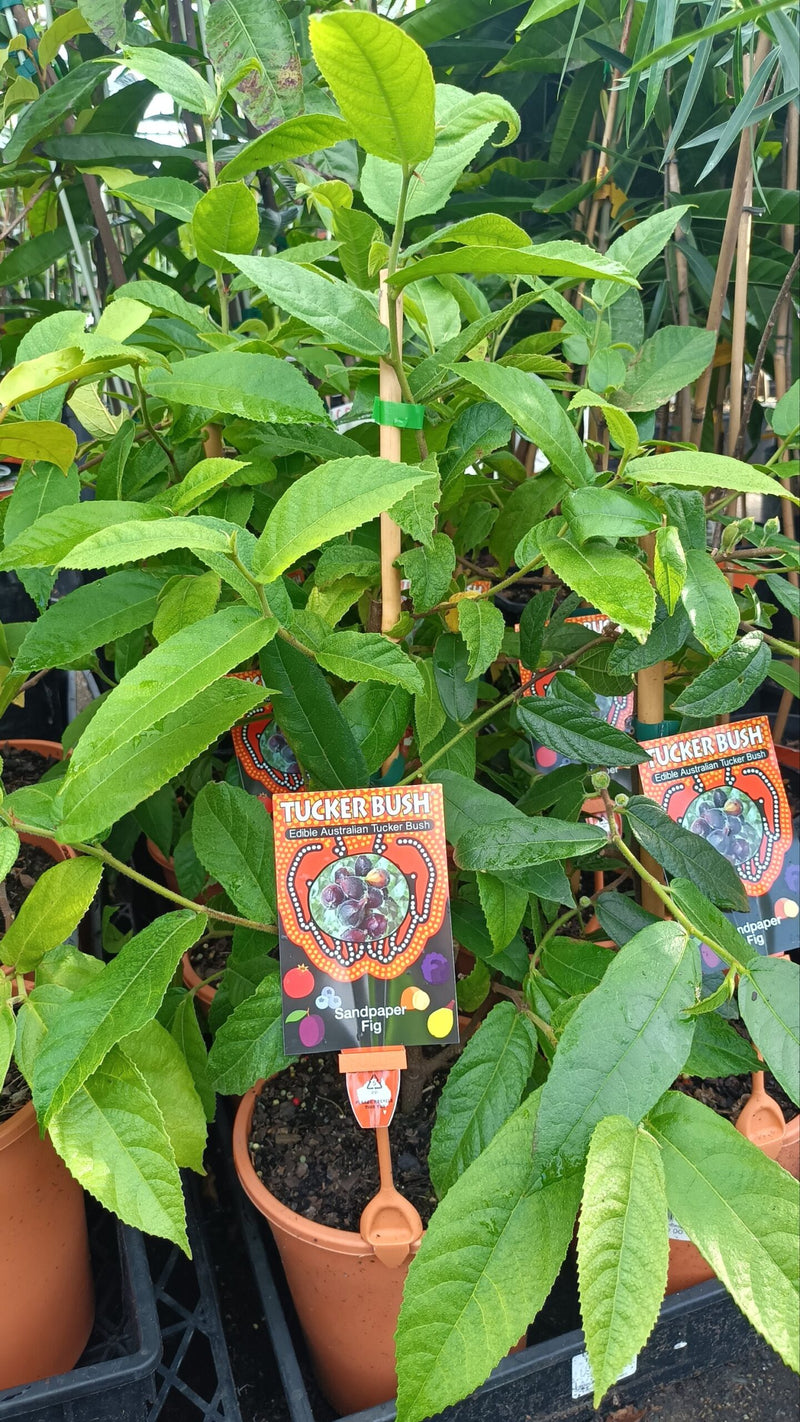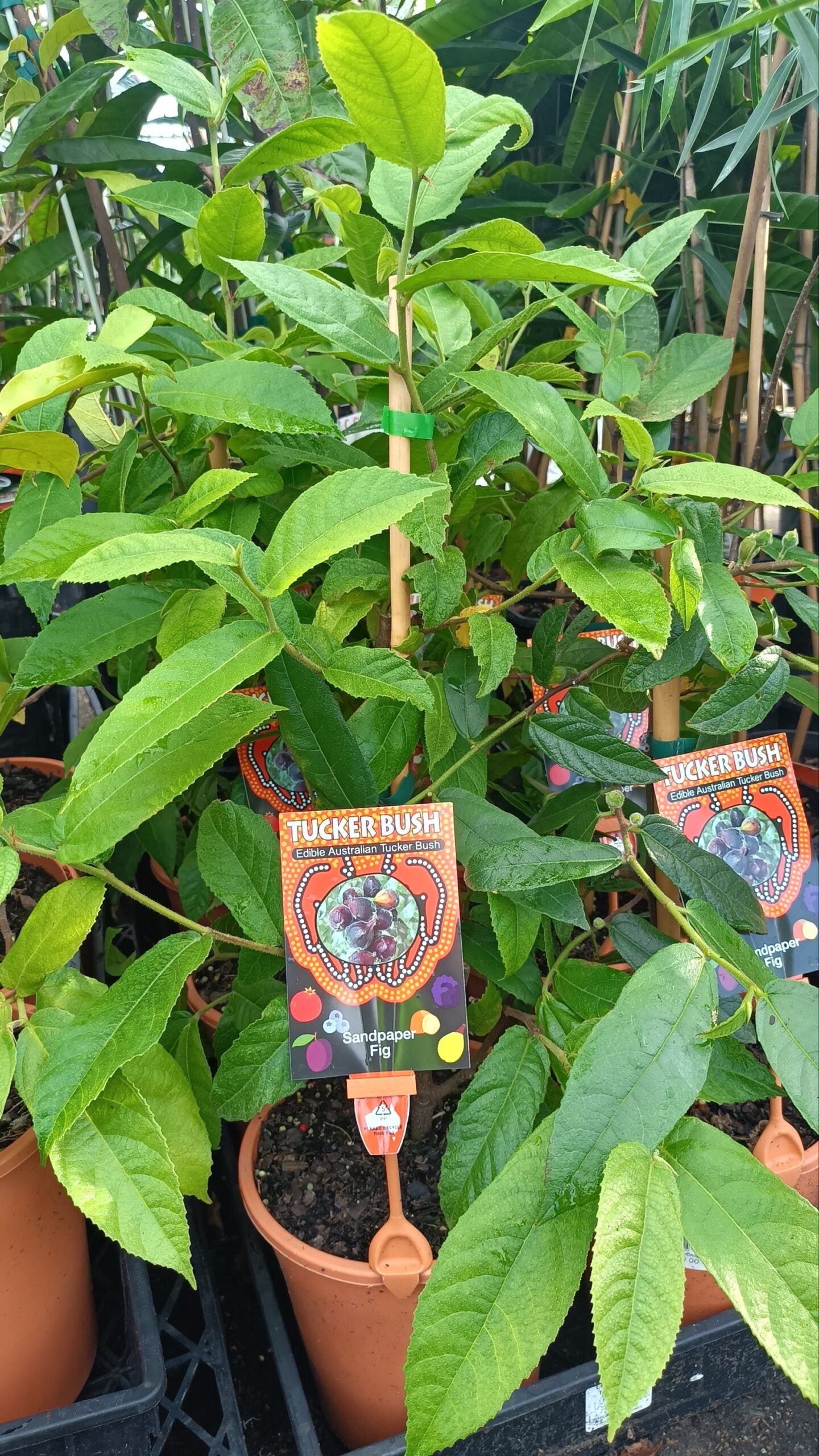

1
/
of
1
Tucker bush Sandpaper Fig (Ficus coronata)
Tucker bush Sandpaper Fig (Ficus coronata)
Regular price
$37.98
Regular price
Sale price
$37.98
Taxes included.
Shipping calculated at checkout.
The Sandpaper Fig, also known by its botanical name Ficus coronata, is a native Australian fig species that grows along creeks and rivers in subtropical and tropical regions. It is part of the Tucker Bush range, which focuses on growing edible, native Australian plants.
Key Information:
- Botanical Name: Ficus coronata
- Common Names: Sandpaper Fig, Creek Sandpaper Fig, River Sandpaper Fig
- Family: Moraceae (the fig family)
- Native Range: Eastern Australia, particularly Queensland and New South Wales
Description:
- Size: A small to medium-sized tree, growing up to 6-12 meters in height.
- Leaves: The leaves are rough and textured, similar to sandpaper, which is how it gets its common name. They are oval-shaped, dark green, and leathery.
- Fruits: Produces small, dark purple to black fig fruits that are about 1-2 cm in diameter. The figs are sweet when ripe and are edible for both humans and wildlife.
Cultivation:
- Soil: Prefers well-drained, loamy soils, but is quite adaptable and can tolerate a variety of soil conditions, including sandy or clay soils.
- Climate: Thrives in tropical and subtropical climates but can tolerate temperate regions. It does well in both full sun and part shade.
- Watering: Requires regular watering, especially in dry conditions, though it is drought tolerant once established.
- Propagation: Propagated easily from cuttings or seeds.
Uses:
- Culinary: The fruits of the Sandpaper Fig are edible and can be eaten fresh or used in jams, sauces, and desserts. The fig pulp has a sweet, rich taste and can also be dried or preserved.
- Medicinal: The leaves and sap of the plant have been traditionally used by Indigenous Australians for medicinal purposes, particularly in treating wounds and skin infections.
- Wildlife: The fruit is a food source for various bird species and mammals, while the tree provides habitat for small animals and insects.
Growing Tips:
- Pruning: Prune to maintain shape and remove any dead or diseased branches.
- Pests/Diseases: The Sandpaper Fig is relatively pest-resistant, though it may attract fruit-eating birds and animals. Protecting the fruit or netting the tree can help in reducing fruit loss.
Special Features:
- The rough texture of the leaves is unique and gives the tree its name. Historically, Indigenous Australians would use the rough leaves as a natural sandpaper for smoothing wooden tools and weapons.
Quantity
Couldn't load pickup availability
Delivery available to NSW, ACT, QLD, VIC
Pickup available at Ladybird Nursery
1452 Anzac Av Kallangur QLD 4503
Open 7 days, 9am to 5pm
(07) 3092 2849
Open 7 days, 9am to 5pm
(07) 3092 2849

